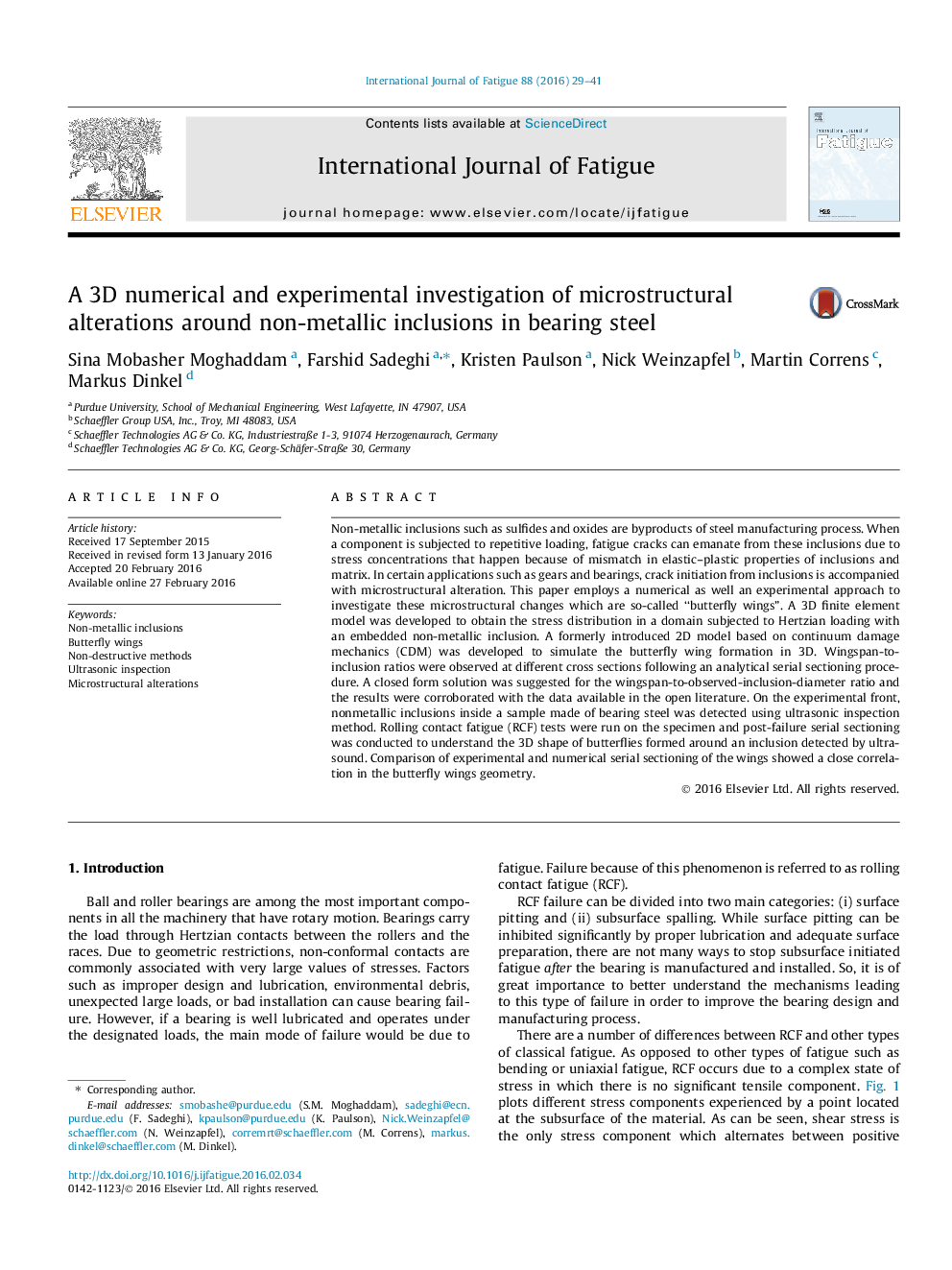| Article ID | Journal | Published Year | Pages | File Type |
|---|---|---|---|---|
| 777518 | International Journal of Fatigue | 2016 | 13 Pages |
•A 3D experimental and analytical study of the butterflies in bearings is conducted.•Experimental and analytical serial sectioning showed the lateral growth of wings.•A closed form solution was proposed for the wingspan relative to inclusion size.
Non-metallic inclusions such as sulfides and oxides are byproducts of steel manufacturing process. When a component is subjected to repetitive loading, fatigue cracks can emanate from these inclusions due to stress concentrations that happen because of mismatch in elastic–plastic properties of inclusions and matrix. In certain applications such as gears and bearings, crack initiation from inclusions is accompanied with microstructural alteration. This paper employs a numerical as well an experimental approach to investigate these microstructural changes which are so-called “butterfly wings”. A 3D finite element model was developed to obtain the stress distribution in a domain subjected to Hertzian loading with an embedded non-metallic inclusion. A formerly introduced 2D model based on continuum damage mechanics (CDM) was developed to simulate the butterfly wing formation in 3D. Wingspan-to-inclusion ratios were observed at different cross sections following an analytical serial sectioning procedure. A closed form solution was suggested for the wingspan-to-observed-inclusion-diameter ratio and the results were corroborated with the data available in the open literature. On the experimental front, nonmetallic inclusions inside a sample made of bearing steel was detected using ultrasonic inspection method. Rolling contact fatigue (RCF) tests were run on the specimen and post-failure serial sectioning was conducted to understand the 3D shape of butterflies formed around an inclusion detected by ultrasound. Comparison of experimental and numerical serial sectioning of the wings showed a close correlation in the butterfly wings geometry.
